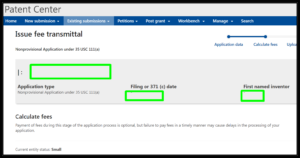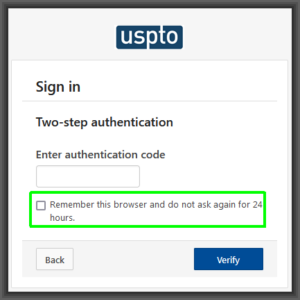
One category of recurring task in any e-filing system is what might be termed a “follow-on submission” or a “subsequently filed document”. With such a task, you somehow indicate the application number of the application in which you wish to file your document. Clearly one of the most important user interface goals is to help the user avoid an undesired result of inadvertently filing a document in the wrong application. EFS-Web gets this right. WIPO’s ePCT system gets this right. But Patentcenter fails, as may be seen from the screen shot at right. Continue reading “Patentcenter fails to tell you what application you are filing in”


